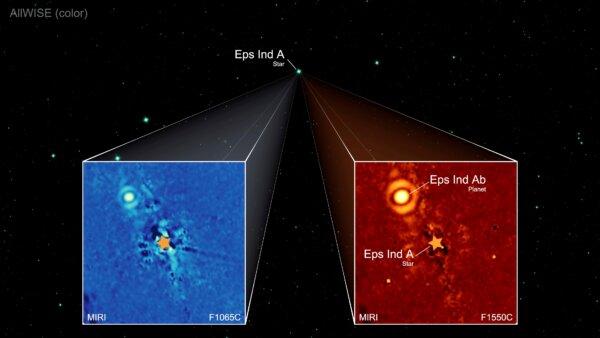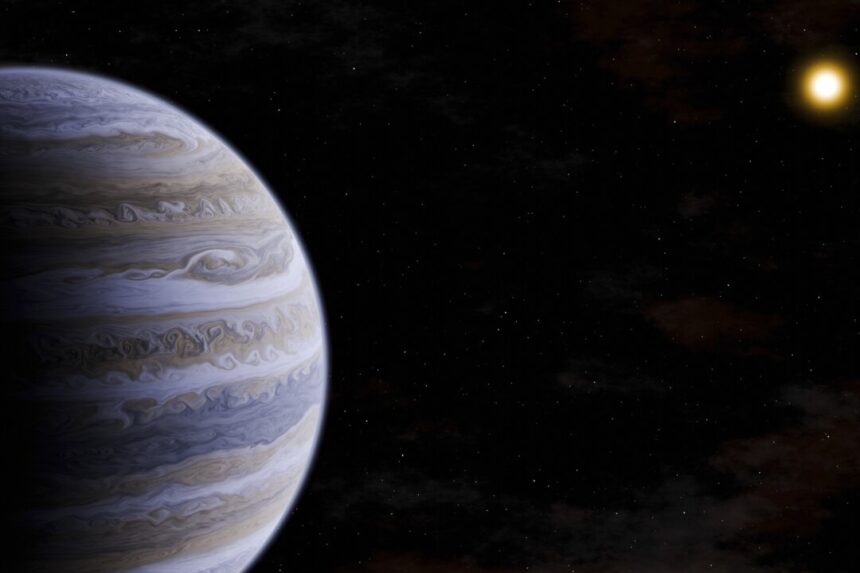A super Jupiter has been discovered orbiting a neighboring star by the Webb Space Telescope, with a unique orbit that takes it more than a century, possibly up to 250 years, to complete. This planet, similar in size to Jupiter but with six times the mass, is rich in hydrogen like Jupiter’s atmosphere.
The planet orbits the star Epsilon Indi A, which is part of a three-star system located 12 light-years away. The international team led by Elisabeth Matthews from the Max Planck Institute for Astronomy in Germany observed this gas giant by blocking the starlight using a special shading device on Webb, allowing them to directly observe the planet as a pinpoint of infrared light.
Despite being 3.5 billion years old, the planet and star are considered relatively young and bright compared to our solar system. The star is visible to the naked eye in the Southern Hemisphere due to its proximity to our solar system.
While this gas giant is unlikely to support life, it provides valuable insights into the evolution of planets over long timescales. The discovery of exoplanets has been a significant milestone in astronomy, with NASA confirming over 5,690 exoplanets to date.
The Webb telescope, launched in 2021 by NASA and the European Space Agency, continues to search for new exoplanets, with a focus on finding planets that may be similar to Earth.

Overall, the discovery of this super Jupiter offers valuable insights into the diversity of planetary systems and their evolution over billions of years.
By Marcia Dunn





